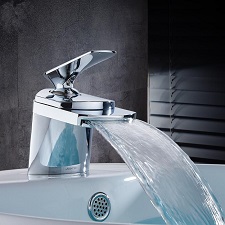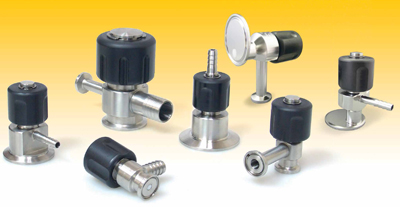All About A Sanitary Valve

What is a sanitary valve?
Sanitary valves are sterile valve fittings that provide special hygienic and health properties. This critical equipment must be built with contaminant-free materials, so the main body is usually constructed with the most advanced stainless steel — 316L. Sanitary valve fittings are generally bought wholesale for use in sterile processing systems to control and regulate the flow of fluid products intended for consumption.

What is a sanitary valve?
Where are sanitary valves used?
Clean or sterile processing requires the use of a sanitary valve. Industries like food, dairy, pharmaceutical, medical, and chemical generally require the use of sanitary valves. Each industrial application has specific valve demands that necessitate a wide range of different types. While selecting a sanitary valve for your processing system, do not forget to consider some significant specifications like the working pressure, the diameter, and the operating temperature of the device.
How to measure different types of sanitary valves?
To determine the sanitary size of your valve fitting, you can easily measure the diameter across the inlet or outlet port. Use the outside diameter of the flange end, measuring from the widest point at the outside of the tube. Sanitary sizes range from ½” up to 12”.
You can also compare sanitary valves by working pressure and temperature. The working pressure refers to the pressure at which the valve is engineered to function. Moreover, the operating temperature denotes the maximum level or the full-required range of operating temperature. There is also an optimum temperature range called “material temperature” at which the valve should function properly. Different types of sanitary valves can be configured to work with liquids, gases, and liquids with suspended solids.
All of these variables within different processing systems necessitate many distinct types of sanitary valves. Several valve variations are present within the same processing system, and each valve serves a specialized function.
How many types of sanitary valves are there?
There are thousands of different types of valves that can be used to control the flow of fluids and gases. Valves are characterized by their design and purpose, specified according to the requirements of the user. Thousands of variations are available on the market, but most of the valves fit into these eleven fundamental types:
- Sanitary ball valves are mostly used for on/off control without pressure drop.
- Sanitary butterfly valves regulate flow or control flow rate in large-diameter pipes.
- Sanitary choke valves are effective for high-pressure drops found in oil and gas wellheads.
- Sanitary check valves allow fluid to pass through in a single direction only.
- Sanitary diaphragm valves are often used in the pharmaceutical and food industries.
- Sanitary gate valves are chiefly used for on/off control in low-pressure drop setups.
- Globe valves are known for their versatile capabilities — excellent flow and pressure regulation and complete shutoff. Globe valves reduce the pressure and turbulence of fluids by forcing the fluid to change direction as it passes through.
- Needle valves are helpful for accurate flow control in systems with sensitive pressure demands.
- The piston valve is useful for regulating and controlling fluids that carry suspended solids. Piston valves have a cylinder plug that shuts off flow through the valve.
- The pinch valve, effective for slurry flow regulation, is only used in very low-pressure drop situations.
- The plug valve is a slim valve used for efficient on/off control with some pressure drops.
Conclusion
Sanitary valves are distinguished not only by the type of valve body, but also by the valve’s operating features, such as temperature, pressure, and sanitary size. The type of metal and end connection fittings are also key factors to consider. In fact, end connections signify whether a specific type of sanitary valve is appropriate for the installation. The functional and construction design are the most important characteristics which affect the length and quality of service that a valve is expected to execute. New industrial techniques require engineers to build additional variations of sanitary valves every year. With so many different types of sanitary fittings and sanitary valves out there, it is reasonable to assume all of the processed food and beverages that you’ve enjoyed throughout your life have passed through several sanitary valves before arriving for your consumption.




